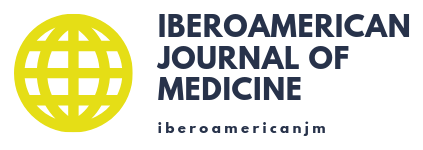The dark side of Paediatric dentistry: Child abuse
Alejandro Carlos de la Parte-Serna, Gonzalo Oliván-Gonzalvo, Cosmina Raluca Fratila, Mariona Hermoso-Vallespí, Andrea Peiró-Aubalat, Ricardo Ortega-Soria
Abstract
Background: Children who have been abused could exhibit lesions and diseases in their oral cavity and develop psychological consequences towards the dentist-patient relationship.
Objectives: Analyse the oral lesions and diseases, the psychological consequences and understand the role of the dentist in the detection and notification of child abuse.
Methods: Systematic review, according to PRISMA statement, with two search strategies in the MEDLINE/PubMed database. 19 publications were included after the application of selection and eligibility criteria.
Results: Physical-abuse-related lesions and Münchausen syndrome are not pathognomonic; this requires the detection of indicators of suspicion. Physical-neglect diseases usually have associated other chronic health problems. Specifically, diseases related to sexual abuse are the oral infection caused by Treponema pallidum and Neisseria gonorrhoeae; while other lesions and diseases might only suggest abuse. The most frequent psychological sign of child abuse in the dentist-patient relationship is dental phobia. Typically, when detecting and notifying, dentist face the following barriers: insufficient information; fear of wrong suspicion; impact in the professional practice; fear of consequences on the minor; fear of violence against the dentist; lack of knowledge of necessary documents/procedures; fear of judicial statement.
Conclusions: Child-abuse-related lesions and diseases often appear in the oral region. Dentists play a fundamental role in the detection and notification of those. It is essential to establish training and action protocols as well as reliance strategies in the patient-dentist relationship.
Keywords
References
1. World Health Organization. Child Maltreatment. Geneva: World Health Organization, 2017. Available from: http://apps.who.int/violence-info/child-maltreatment [accessed Dec 2019].
2. World Health Organization. Violence against children: tackling hidden abuse. Copenhagen: WHO Regional Office for Europe. 13/1/2020. Available from: http://www.euro.who.int/en/health-topics/disease-prevention/violence-and-injuries/news/news/2020/01/violence-against-children-tackling-hidden-abuse [accessed Feb 2020].
3. Fisher-Owens SA, Lukefahr JL, Tate AR. Oral and dental aspects of child abuse and neglect. Pediatr Dent. 2017;39:278-83.
4. Moher D, Liberati A, Tetzlaff J, Altman DG; PRISMA Group. Preferred reporting items for systematic reviews and meta-analyses: the PRISMA statement. J Clin Epidemiol. 2009;62:1006-12. doi: 10.1016/j.jclinepi.2009.06.005.
5. Mathur S, Chopra R. Combating child abuse: the role of a dentist. Oral Health Prev Dent. 2013;11:243-50. doi: 10.3290/j.ohpd.a29357.
6. Kvist T, Cocozza M, Annerbäck EM, Dahllöf G. Child maltreatment - prevalence and characteristics of mandatory reports from dental professionals to the social services. Int J Paediatr Dent. 2017;27:3-10. doi: 10.1111/ipd.12230.
7. Raja S, Rajagopalan CF, Kruthoff M, Kuperschmidt A, Chang P, Hoersch M. Teaching dental students to interact with survivors of traumatic events: development of a two-day module. J Dent Educ. 2015;79:47-55.
8. Kvist T, Wickström A, Miglis I, Dahllöf G. The dilemma of reporting suspicions of child maltreatment in pediatric dentistry. Eur J Oral Sci. 2014;122:332-8. doi: 10.1111/eos.12143.
9. Cairns AM, Mok JY, Welbury RR. The dental practitioner and child protection in Scotland. Br Dent J. 2005;199:517-20; discussion 512; quiz 530-1. doi: 10.1038/sj.bdj.4812809.
10. Park CM, Welbury R, Herbison J, Cairns A. Establishing comprehensive oral assessments for children with safeguarding concerns. Br Dent J. 2015;219:231-6. doi: 10.1038/sj.bdj.2015.689.
11. Katner DR, Brown CE. Mandatory reporting of oral injuries indicating possible child abuse. J Am Dent Assoc. 2012;143:1087-92. doi: 10.14219/jada.archive.2012.0038.
12. Leeners B, Stiller R, Block E, Görres G, Imthurn B, Rath W. Consequences of childhood sexual abuse experiences on dental care. J Psychosom Res. 2007;62:581-8. doi: 10.1016/j.jpsychores.2006.11.009.
13. Stalker CA, Russell BD, Teram E, Schachter CL. Providing dental care to survivors of childhood sexual abuse: treatment considerations for the practitioner. J Am Dent Assoc. 2005;136:1277-81. doi: 10.14219/jada.archive.2005.0344.
14. Uldum B, Christensen HN, Welbury R, Poulsen S. Danish dentists' and dental hygienists' knowledge of and experience with suspicion of child abuse or neglect. Int J Paediatr Dent. 2010;20:361-5. doi: 10.1111/j.1365-263X.2010.01070.x.
15. Lazenbatt A, Freeman R. Recognizing and reporting child physical abuse: a survey of primary healthcare professionals. J Adv Nurs. 2006;56:227-36. doi: 10.1111/j.1365-2648.2006.04030.x.
16. McDowell JD, Kassebaum DK, Fryer GE Jr. Recognizing and reporting dental violence: a survey of dental practitioners. Spec Care Dentist. 1994;14:49-53. doi: 10.1111/j.1754-4505.1994.tb01099.x.
17. Dougall A, Fiske J. Surviving child sexual abuse: the relevance to dental practice. Dent Update. 2009;36:294-6, 298-300, 303-4. doi: 10.12968/denu.2009.36.5.294.
18. Willumsen T. The impact of childhood sexual abuse on dental fear. Community Dent Oral Epidemiol. 2004;32:73-9. doi: 10.1111/j.1600-0528.2004.00120.x.
19. Uldum B, Christensen HN, Welbury R, Haubek D. How Danish dentists and dental hygienists handle their role in child abuse and neglect matters. Acta Odontol Scand. 2017;75:332-7. doi: 10.1080/00016357.2017.1307448.
20. Brattabø IV, Iversen AC, Åstrøm AN, Bjørknes R. Experience with suspecting child maltreatment in the Norwegian public dental health services, a national survey. Acta Odontol Scand. 2016;74:626-32. doi: 10.1080/00016357.2016.1230228.
21. Mouden LD, Bross DC. Legal issues affecting dentistry's role in preventing child abuse and neglect. J Am Dent Assoc. 1995;126:1173-80. doi: 10.14219/jada.archive.1995.0339.
22. Rodrigues JLSA, Lima APB, Nagata JY, Rigo L, Cericato GO, Franco A, Paranhos LR. Domestic violence against children detected and managed in the routine of dentistry - A systematic review. J Forensic Leg Med. 2016;43:34-41. doi: 10.1016/j.jflm.2016.07.006.
23. Harris JC, Bradbury J, Porritt J, Nilchian F, Franklin CD. NHS dental professionals' evaluation of a child protection learning resource. Br Dent J. 2011;210:75-9. doi: 10.1038/sj.bdj.2011.3.
24. Ministerio de Sanidad, Servicios Sociales e Igualdad. Protocolo básico de intervención contra el maltrato infantil en el ámbito familiar. Madrid: Secretaría de Estado de Servicios Sociales e Igualdad; 2014. Available from: http://www.observatoriodelainfancia.mscbs.gob.es/productos/pdf/MaltratoInfantil_accesible.pdf
Submitted date:
03/30/2020
Reviewed date:
04/02/2020
Accepted date:
04/05/2020
Publication date:
04/05/2020

